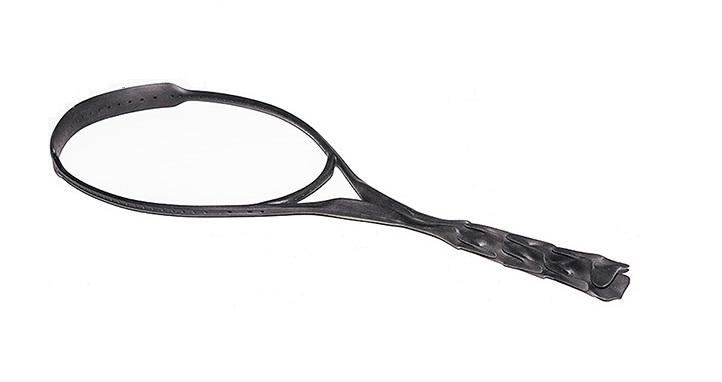 If any of you have ever played tennis, then you know that besides the skill of your opponent and yourself, the racket is the single most influential part of the game. Play with a cheap $15 racket that you bought on Amazon.com (like I did last time I played) and your game will likely suffer, but play with a quality racket and you may just surprise yourself and your opponent.
If any of you have ever played tennis, then you know that besides the skill of your opponent and yourself, the racket is the single most influential part of the game. Play with a cheap $15 racket that you bought on Amazon.com (like I did last time I played) and your game will likely suffer, but play with a quality racket and you may just surprise yourself and your opponent.
Ever since Howard Head and the Prince brand introduced the very first over-sized racket head in 1976, this integral part of the game has remained relatively unchanged. CRP Technology, and two very promising design students from the Rimini Academy of Fine Arts, named Mario Coppola and Salvatore Gallo, have teamed up to create what may become the next generation of tennis rackets.
The team first broke a typical racket down into three separate units, the handle, the neck, and the head. Their goal was to create an aerodynamic product which would hopefully improve a player’s game, while also featuring quite the intriguing aesthetics. The focus was primarily on the handle, which as you can see from the images, is quite unique. Once they figured out the perfect design for each of the three parts of the racket by fabricating structural variants for each, it was now time to put it all together. The team worked to figure out how to produce a frame which would allow for uniformity within the racket, leading to smooth, balanced play.
 To create the prototype, they used CRP Technology’s Windform XT 2.0 material. This material, which is made for use in a laser sintering 3D printer, combines carbon fiber with a polymer base to produce parts which can stand up to extreme stress, while being relatively resistant to damage, and very light in weight; everything you’d want in an actual tennis racket. In fact, Windform material is used heavily within the space and motorsport industries for final production runs as well as prototyping because of its unique physical properties.
To create the prototype, they used CRP Technology’s Windform XT 2.0 material. This material, which is made for use in a laser sintering 3D printer, combines carbon fiber with a polymer base to produce parts which can stand up to extreme stress, while being relatively resistant to damage, and very light in weight; everything you’d want in an actual tennis racket. In fact, Windform material is used heavily within the space and motorsport industries for final production runs as well as prototyping because of its unique physical properties.
Will this new racket be the future of tennis? Maybe not. However, it’s certainly a step in the right direction, a direction in which complexity of design does not equate to complexity within the manufacturing process. Through the use of exciting new additive manufacturing materials and machines, the future of all sports may soon look a lot different than the cookie cutter designs we are all used to seeing.
Let us know you thoughts on this uniquely designed tennis racket and what it could mean for the future of the sport. Discuss in the Windform Tennis Racket forum thread on 3DPB.com.
Subscribe to Our Email Newsletter
Stay up-to-date on all the latest news from the 3D printing industry and receive information and offers from third party vendors.
You May Also Like
3D Printing News Briefs, April 13, 2024: Robotics, Orthotics, & Hypersonics
In 3D Printing News Briefs today, we’re focusing first on robotics, as Carnegie Mellon University’s new Robotics Innovation Center will house several community outreach programs, and Ugogo3D is now working...
Rail Giant Alstom Saves $15M with 3D Printing Automation Software 3D Spark
3D Spark has entered into a three-year deal with the rail giant Alstom. Alstom, a transport behemoth with annual revenues of $16 billion, specializes in the manufacture of trains, trams,...
Meltio Expands Global Reach with New Partnerships in the Americas and Europe
Spanish 3D printing manufacturer Meltio has expanded its sales network across the globe. With the addition of three new partners in the United States, Brazil, Argentina, and Italy, Meltio aims...
3D Printing Webinar and Event Roundup: April 7, 2024
Webinars and events in the 3D printing industry are picking back up this week! Sea-Air-Space is coming to Maryland, and SAE International is sponsoring a 3D Systems webinar about 3D...
































